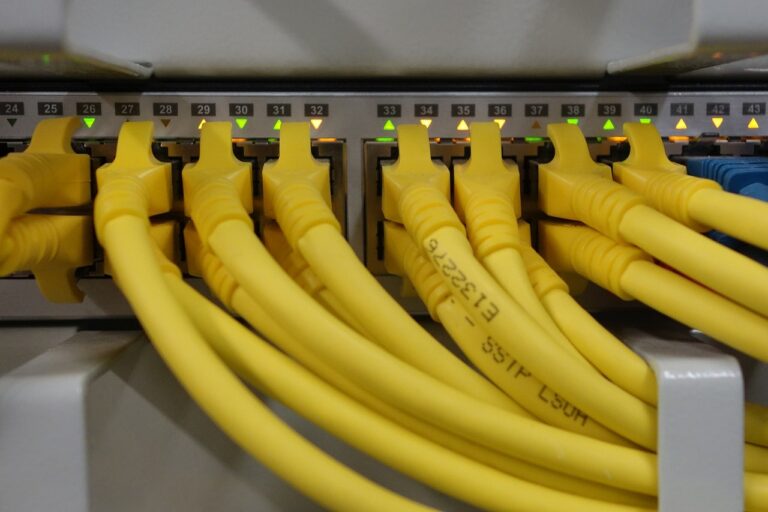How Can I Assess The Cybersecurity Maturity Of My Organization?
In today’s rapidly evolving digital landscape, ensuring the cybersecurity of your organization is of utmost importance. But how can you gauge the maturity level of your cybersecurity measures? Evaluating the strength of your organization’s cybersecurity can be a daunting task, with countless variables and potential vulnerabilities to consider. However, understanding and assessing your organization’s cybersecurity maturity is crucial for identifying weaknesses, implementing strategic improvements, and fortifying your defenses against cyber threats. In this article, we’ll explore practical steps you can take to effectively assess the cybersecurity maturity of your organization and propel it towards a more secure future.
1. Conduct a Cybersecurity Maturity Assessment
To assess the cybersecurity maturity of your organization, you need to follow a structured approach that encompasses various aspects of your organization’s security practices. The first step in this process is to define the scope of the assessment. Determine which areas of your organization’s cybersecurity you would like to assess, such as governance, risk management, security operations, and compliance. By clearly defining the scope, you will have a better understanding of what needs to be evaluated and the resources required for the assessment.
Next, identify relevant frameworks and standards that can guide your assessment. There are numerous frameworks available, such as the National Institute of Standards and Technology (NIST) Cybersecurity Framework, ISO 27001, and the Center for Internet Security (CIS) Controls. These frameworks provide a set of best practices to measure the maturity of your organization’s cybersecurity practices against industry standards and benchmarks.
Once you have identified the frameworks and standards, determine the methodology for conducting the assessment. This involves deciding whether you will use internal resources or engage external experts to conduct the assessment. You should also consider the tools and techniques that will be utilized during the assessment process. By establishing a clear methodology, you ensure consistency and accuracy in assessing your organization’s cybersecurity maturity.
To conduct a thorough assessment, it is essential to establish an assessment team comprising individuals with expertise in different areas of cybersecurity. This team will be responsible for collecting and analyzing data related to the assessment. By involving a diverse group of professionals, you can benefit from their respective knowledge and insights, and ensure a comprehensive evaluation of your organization’s cybersecurity maturity.
Collecting and analyzing data is a crucial step in assessing the cybersecurity maturity of your organization. This involves gathering information on your organization’s cybersecurity policies, procedures, and practices. It may include reviewing documentation, conducting interviews with key personnel, and performing technical assessments and audits. The data collected during this phase will provide valuable insights into the strengths and weaknesses of your organization’s cybersecurity practices.
2. Evaluate Governance and Leadership
Governance and leadership play a vital role in determining the cybersecurity posture of an organization. To evaluate the governance and leadership aspects of your organization’s cybersecurity, consider the following steps:
2.1 Assess the Organization’s Cybersecurity Policies
Start by reviewing your organization’s cybersecurity policies and procedures. These policies should outline the framework and guidelines for implementing cybersecurity practices across the organization. Evaluate whether the policies are comprehensive, up-to-date, and aligned with industry standards. Look for any gaps or inconsistencies that may need to be addressed.
2.2 Review Board and Executive Involvement
Assess the level of involvement and understanding of the board and executive management in cybersecurity. Evaluate whether cybersecurity is considered a priority and if there is a designated cybersecurity leader within the organization. Look for evidence of regular reporting and discussion on cybersecurity matters at the board and executive level.
2.3 Evaluate Cybersecurity Strategy and Planning
Examine the organization’s cybersecurity strategy and planning processes. Evaluate whether there is a defined cybersecurity strategy in place and if it aligns with the overall business objectives. Assess the effectiveness of strategic planning in identifying and addressing cybersecurity risks and challenges.
2.4 Assess Roles and Responsibilities
Evaluate the roles and responsibilities related to cybersecurity within the organization. Assess whether there are clear job descriptions and defined responsibilities for cybersecurity roles. Look for evidence of training and awareness programs to ensure that employees are aware of their cybersecurity responsibilities.
3. Examine Risk Management Practices
Risk management is a critical component of an effective cybersecurity program. To evaluate your organization’s risk management practices, consider the following steps:
3.1 Evaluate Risk Assessment Processes
Review the organization’s processes for identifying and assessing cybersecurity risks. Assess whether there are established methodologies for conducting risk assessments and whether these assessments are conducted regularly. Look for evidence of risk registers or similar tools to track and manage cybersecurity risks.
3.2 Assess Risk Treatment and Mitigation Measures
Evaluate the organization’s approach to treating and mitigating identified cybersecurity risks. Assess whether there are documented processes for implementing risk treatment measures and if these measures are in line with industry best practices. Look for evidence of risk mitigation activities such as implementing controls, conducting vulnerability assessments, and developing incident response plans.
3.3 Review Incident Response and Recovery Plans
Assess the organization’s incident response and recovery plans. Evaluate whether there are well-defined processes and procedures in place to detect, respond to, and recover from cybersecurity incidents. Look for evidence of incident response testing and simulation exercises to validate the effectiveness of these plans.
3.4 Evaluate Business Continuity Planning
Evaluate the organization’s business continuity planning process and its integration with cybersecurity. Assess whether there are documented business impact assessments and business continuity plans in place. Look for evidence of regular testing and updating of these plans to ensure they are effective in the event of a cybersecurity incident.
4. Review Security Operations
Effective security operations are essential for detecting, preventing, and responding to cybersecurity incidents. To assess your organization’s security operations, consider the following steps:
4.1 Assess Security Monitoring and Detection Capabilities
Evaluate the organization’s capabilities for monitoring and detecting cybersecurity threats and incidents. Assess whether there are robust monitoring systems in place to identify potential threats and vulnerabilities. Look for evidence of real-time monitoring, threat intelligence integration, and incident detection processes.
4.2 Evaluate Access Control and Identity Management Practices
Assess the organization’s access control and identity management practices. Evaluate whether there are documented processes for controlling user access and managing identities. Look for evidence of strong authentication mechanisms, least privilege access controls, and regular user access reviews.
4.3 Review Vulnerability Management Processes
Evaluate the organization’s vulnerability management processes. Assess whether there are documented procedures for identifying, tracking, and remediating vulnerabilities. Look for evidence of vulnerability scanning, patch management, and regular vulnerability assessments.
4.4 Evaluate Patch Management Practices
Assess the organization’s patch management practices. Evaluate whether there are documented processes for identifying, testing, and deploying patches. Look for evidence of patch management tools, processes for prioritizing patches, and regular patching activities.
5. Assess Security Awareness and Training
The human factor is a significant vulnerability in any organization’s cybersecurity defenses. To assess your organization’s security awareness and training efforts, consider the following steps:
5.1 Evaluate Security Awareness Programs
Assess the organization’s security awareness programs. Evaluate whether there are formal programs in place to educate employees about cybersecurity threats and best practices. Look for evidence of regular training sessions, awareness campaigns, and communication materials.
5.2 Review Employee Training Initiatives
Evaluate the organization’s employee training initiatives. Assess whether there are training programs in place to enhance employees’ knowledge and skills related to cybersecurity. Look for evidence of role-based training, phishing simulation exercises, and other interactive training methods.
5.3 Assess Phishing and Social Engineering Awareness
Evaluate the organization’s efforts to raise awareness about phishing attacks and social engineering techniques. Assess whether there are regular campaigns to educate employees about the risks and how to identify and report suspicious emails or communication. Look for evidence of mock phishing exercises and clear reporting mechanisms.
5.4 Evaluate Security Incident Reporting Mechanisms
Assess the organization’s security incident reporting mechanisms. Evaluate whether there are clear and easily accessible channels for reporting security incidents or concerns. Look for evidence of incident response processes, incident reporting metrics, and feedback mechanisms to encourage reporting.
6. Evaluate Physical Security Measures
Physical security measures are essential to protect the organization’s assets and ensure the confidentiality, integrity, and availability of critical systems and data. To assess your organization’s physical security measures, consider the following steps:
6.1 Assess Physical Access Controls
Evaluate the organization’s physical access controls. Assess whether there are procedures in place to control access to buildings, data centers, and other sensitive areas. Look for evidence of access control systems, surveillance cameras, and visitor management processes.
6.2 Review Environmental Controls
Assess the organization’s environmental controls. Evaluate whether there are measures in place to manage and mitigate environmental risks, such as power outages, temperature fluctuations, and natural disasters. Look for evidence of backup power systems, temperature and humidity control mechanisms, and disaster recovery plans.
6.3 Evaluate Data Center Security
Evaluate the security measures implemented in the organization’s data centers. Assess whether there are physical security controls, such as secure cages, biometric access controls, and video surveillance systems. Look for evidence of fire suppression systems, environmental monitoring, and robust backup and recovery mechanisms.
6.4 Assess Asset Management Practices
Assess the organization’s asset management practices. Evaluate whether there are documented processes for tracking and managing assets, including hardware, software, and data. Look for evidence of inventory management systems, device encryption, and procedures for securely disposing of assets.
7. Review Third-Party Risk Management
Many organizations rely on third-party vendors and partners for various services and support. To assess your organization’s third-party risk management practices, consider the following steps:
7.1 Evaluate Vendor Selection and Onboarding Processes
Assess the organization’s vendor selection and onboarding processes. Evaluate whether there are documented procedures for assessing the security capabilities of potential vendors. Look for evidence of due diligence checks, vendor security questionnaires, and contractual clauses related to cybersecurity.
7.2 Assess Contractual and Legal Considerations
Evaluate the contractual and legal considerations related to third-party cybersecurity. Assess whether there are clear contractual obligations and liabilities related to cybersecurity. Look for evidence of clauses addressing data protection, security incident reporting, and liability in the event of a cybersecurity incident.
7.3 Review Ongoing Vendor Management Practices
Assess the organization’s ongoing practices for managing third-party vendors. Evaluate whether there are processes in place to monitor the cybersecurity performance of vendors. Look for evidence of periodic security assessments, performance reviews, and incident response coordination mechanisms.
7.4 Evaluate Vendor Security Assessments
Assess the organization’s practices for assessing the security posture of third-party vendors. Evaluate whether there are procedures in place to conduct security assessments of vendors. Look for evidence of vulnerability scanning, penetration testing, and security audits of critical vendors.
8. Assess Security Incident Response Capability
An effective and well-prepared incident response capability is essential to minimize the impact of cybersecurity incidents. To assess your organization’s security incident response capability, consider the following steps:
8.1 Review Incident Detection and Response Processes
Assess the organization’s incident detection and response processes. Evaluate whether there are documented procedures for detecting and responding to cybersecurity incidents. Look for evidence of incident escalation procedures, incident response playbooks, and collaboration with external incident response teams if necessary.
8.2 Assess Forensic Investigation Capabilities
Evaluate the organization’s forensic investigation capabilities. Assess whether there are procedures in place for conducting forensic investigations of cybersecurity incidents. Look for evidence of digital forensics tools, trained personnel, and partnerships with external forensic experts if required.
8.3 Evaluate Post-Incident Remediation Processes
Assess the organization’s post-incident remediation processes. Evaluate whether there are procedures in place to mitigate the impact of a cybersecurity incident and prevent similar incidents in the future. Look for evidence of lessons learned sessions, incident reporting metrics, and incident remediation plans.
8.4 Review Lessons Learned and Continuous Improvement
Assess the organization’s practices for learning from cybersecurity incidents and continuously improving the incident response capability. Evaluate whether there are processes in place to capture and analyze lessons learned from incidents. Look for evidence of root cause analysis, incident response simulation exercises, and regular updates to incident response plans.
9. Measure Compliance with Regulations and Standards
Compliance with regulations and industry standards is crucial for maintaining effective cybersecurity practices. To assess your organization’s compliance efforts, consider the following steps:
9.1 Evaluate Compliance Monitoring and Reporting
Assess the organization’s compliance monitoring and reporting processes. Evaluate whether there are mechanisms in place to track and report compliance with applicable regulations and standards. Look for evidence of regular compliance audits, vulnerability assessments, and documentation of compliance activities.
9.2 Assess Adherence to Industry Standards
Evaluate the organization’s adherence to industry standards for cybersecurity. Assess whether there are documented processes for aligning cybersecurity practices with industry standards. Look for evidence of benchmarking against industry best practices, adherence to specific security controls, and participation in industry certifications or accreditations.
9.3 Review Regulatory Compliance Efforts
Assess the organization’s efforts to comply with relevant cybersecurity regulations and legal requirements. Evaluate whether there are processes in place to track and implement regulatory requirements. Look for evidence of compliance with data protection regulations, privacy laws, and sector-specific cybersecurity regulations.
9.4 Assess Privacy and Data Protection Compliance
Evaluate the organization’s compliance with privacy and data protection requirements. Assess whether there are documented processes for handling and protecting personal and sensitive data. Look for evidence of privacy impact assessments, data protection policies, and encryption mechanisms for sensitive data.
10. Gauge Security Testing and Evaluation Practices
Regular security testing and evaluation are essential to identify vulnerabilities and weaknesses in your organization’s cybersecurity defenses. To assess your organization’s security testing and evaluation practices, consider the following steps:
10.1 Evaluate Penetration Testing and Vulnerability Assessments
Assess the organization’s penetration testing and vulnerability assessment processes. Evaluate whether there are procedures in place for identifying and remediating vulnerabilities in systems and applications. Look for evidence of external penetration testing, internal vulnerability assessments, and documented processes for remediating identified vulnerabilities.
10.2 Review Security Architecture and Design Reviews
Evaluate the organization’s practices for reviewing the security architecture and design of systems and applications. Assess whether there are processes in place to ensure that security requirements are incorporated into the design phase. Look for evidence of secure coding practices, threat modeling exercises, and security architecture reviews.
10.3 Assess Security Testing of Applications and Systems
Evaluate the organization’s practices for testing the security of applications and systems. Assess whether there are procedures in place for conducting secure code reviews, application security testing, and system vulnerability assessments. Look for evidence of application security testing tools, secure development practices, and ongoing testing throughout the software development lifecycle.
10.4 Evaluate Security Incident Simulation Exercises
Assess the organization’s practices for simulating and testing cybersecurity incidents. Evaluate whether there are processes in place to conduct tabletop exercises or red teaming exercises to test the organization’s incident response capability. Look for evidence of incident simulation tools, scenario-based exercises, and post-exercise analysis and improvement activities.
Assessing the cybersecurity maturity of your organization is a complex and ongoing process. It requires a comprehensive evaluation of various aspects of your organization’s cybersecurity practices, including governance and leadership, risk management, security operations, compliance, and more. By following a structured approach and utilizing frameworks and standards, you can gain valuable insights into your organization’s cybersecurity maturity and identify areas for improvement. Regular assessments will help you proactively address emerging threats and enhance your organization’s overall cybersecurity posture. Remember, cybersecurity is a continuous journey, and assessing your maturity is an important step in this ongoing process.








